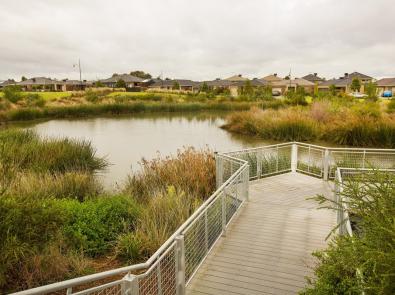As urban development increases and climate change brings more extreme weather events, it is critical we continue improving the quality of stormwater discharged to Port Philip and Western Port bays. One of the ways we’ve been doing this is by building and managing stormwater wetlands.
Wetlands and retarding basins provide places for our native wildlife to thrive and are important parts of the drainage network. They reduce the velocity of stormwater flows by capturing and then gradually releasing water, to reduce the risk of flooding.
Our stormwater wetlands network includes sediment ponds. These ponds ensure contaminants carried by stormwater can settle out, after which they are processed for disposal. If the sediment pond becomes excessively full, the system cannot work to its full potential, leading to an increased risk of flooding.
How we clean wetlands and sediment ponds
We are constantly tending to Melbourne’s wetlands and waterways. The Desilt Program is part of our Storm Water Quality Treatment System to keep wetlands clean, reduce the risk of flooding and protect our waterways.
Specialist machinery excavates the accumulated sediment from sediment ponds which is then temporarily deposited onsite to allow it to dry out. There may be a slight odour while sediment is naturally drying however this process is not harmful in any way. The sediment stockpiles are then removed from the site after they have dried out sufficiently.
We recognise that there may be some short term disturbances to local residents while built-up sediment is removed from wetlands, however in the long term local residents will benefit from improved amenity, safety and essential flood mitigation.
You may also like...
Delivering on the Sustainable Development Goals
This report outlines Melbourne Water's unwavering commitment to advancing sustainability through the United Nations Sustainable Development Goals (SDGs).




